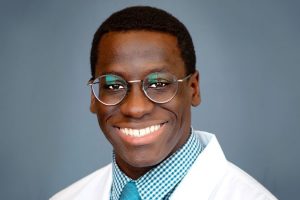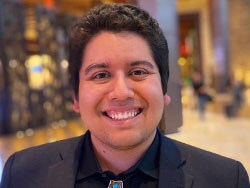Medical Schools See an Uptick in Black and Hispanic Students

While US medical schools have made some progress in enrolling underrepresented students, their efforts to diversify their faculty have largely stalled, according to recently released data.
First-year enrollment of Hispanic students increased by 4%, and Black medical students rose 9%, including a 5% increase in Black men compared to the prepandemic year of 2020–2021, according to the Association of American Medical Colleges (AAMC).
However, first-year enrollment of American Indian medical students declined by 9% this academic year compared to 2020–2021, according to the AAMC.
The number of underrepresented faculty has increased at a slower rate than the enrollment of underrepresented medical students, a recent JAMA Network Open study shows. Only Black faculty have seen modest increases in the past three decades, and those increases varied by institution. The numbers of Hispanic faculty declined relative to a growing population. Junior faculty tended to be more diverse than senior faculty, said the researchers.
Many underrepresented medical students and professors say that diversity matters: they want to help reduce healthcare disparities, challenge racial biases in medicine, and serve communities often lacking physicians. Yet some students drop out and faculty leave academia because they lack support or encounter a hostile work environment.
“Having a diverse workforce in medicine means that patients can choose physicians from similar backgrounds, whether it’s their race, religion, or gender. Research shows that concordance enhances trust and the physician-patient relationship and improves medication adherence,” said Joel Bervell, a 4th-year Ghanian-American medical student at Washington State University School of Medicine.

Alec Calac
Alec Calac is a 5th-year MD/PhD student at the University of California–San Diego School of Medicine and a member of the Pauma band of Luiseño Indians in California.
“Being present at medical schools enables you to challenge stereotypes about ethnic groups, such as the idea that differences are based on someone’s race or ethnicity rather than their social determinants of health,” Calac said. “It’s not about race but racism.”
Bervell calls himself a “medical myth buster” on social media because he questions and exposes racial biases in medicine that can have negative health consequences for Black patients. He narrates video clips about his discoveries and posts them on TikTok, where he has more than 600,000 followers. By drawing attention to these issues, Bervell wants to change the medical system.
In one TikTok video, he explains that the equation used to measure kidney function (glomerular filtration rate [GFR]) has a built-in “race adjustment” that increases the GFR for all Black patients. “That overestimation could mean that 3.3 million Black Americans would have had a higher stage of kidney disease and missed out on care and treatment,” said Bervell.
“This is just one of many examples of racist archaic practices that are embedded in healthcare,” said Susana Morales, MD, associate professor of clinical medicine at Weill Cornell Medicine and vice chair for diversity in the Department of Medicine.
As a Latina, she often advocates for Spanish-speaking patients. “I raise my hand in meetings when researchers come to our group to invite our patients to participate. I will ask whether their studies include Spanish-speaking patients and if so, whether they’re providing interpreter services.”
Enrollment Gains and Losses
Historically Black colleges and universities (HBCUs) have been the major producer of Black physicians and other health professionals, said Norma Poll-Hunter, PhD, AAMC’s senior director of workforce diversity. The top three producing HBCUs with medical schools are Meharry, Morehouse, and Howard. There are only six HBCUs with medical schools in the US.
Poll-Hunter said that the AAMC is working with the United Negro College Fund to learn how to support more HBCUs that can nurture pathways to medical schools.
“Our medical schools are a microcosm of our society,” said Poll-Hunter. “They have been assessing practices and policies that have contributed to structural challenges to groups who are historically underrepresented in medicine. They’ve begun to understand what it looks like to be an antiracist institution,” she said.
Most medical schools have redirected their admission policies from relying solely on the applicant’s MCAT scores and GPA to conducting a “holistic review that looks at the whole profile a student brings to bridge the learning environment,” said Poll-Hunter.
Academic medical centers also have started to change their institutional culture and climate by hiring experts in diversity, equity, and inclusion for leadership positions, including at the departmental level, added Poll-Hunter.
“There’s been no meaningful increase of Native American medical students for several years, said UCSD’s Calac. “It always comes down to mentorship, costs, and having a network of peers to lean on. Many students are navigating this journey alone.”
Calac said it was very isolating being the only Native American in his first-year medical class of 134 students and only one of two Native medical students in the medical school.
That motivated him to advocate for greater enrollment and support of Native American students in medicine. He joined the Association of Native American Medical Students and is the current national president.
“We now have over a dozen medical students at UC San Diego, who represent different tribes from all over the US,” said Calac.
The University of California system now covers all tuition and student fees for Native medical and health professional students who are residents of California and registered members of federally recognized tribes.
Why Medical Students of Color Drop Out
It’s not enough for medical schools to increase enrollment of students of color; they must also support them throughout the medical system pathway, said Bervell.
Researchers at Yale University found that over 5% of Hispanic and Black medical students were likely to drop out, while Native American students were twice as likely to drop out. That compared to about 2% of White medical students.
Those who were more likely to drop out were individuals of color who identified with other marginalized groups, including being from an underrepresented race or ethnicity, coming from a low-income household or from an underresourced neighborhood.
Bervell said that students of color may drop out because they feel misunderstood or face frequent microaggressions.
While the faculty at Washington State University are supportive of his efforts, Bervell said he hears from medical students at other schools that the faculty “brushed them off when they raised similar questions about racial bias.”
Bervell said that even at his medical school, many of his friends have complained that they experienced microaggressions from physicians.
Calac noted that some Native American medical students have been dismayed by a lack of training opportunities with their tribes, especially on reservations. He helped advocate for a new program at UC-San Diego and UC-Davis to offer that training.
“From my perspective as an advocate for my community, it’s not always about race, but our political status as members of sovereign communities,” said Calac.
Poll-Hunter mentioned that some medical schools have implemented a “holistic student affairs” approach, which, like holistic admissions, looks at students in a more complex way. “This means thinking about their academic as well as social, personal and cultural needs to help them be successful,” she said.
Why Diverse Faculty Matter
“Faculty are the ones that can support underrepresented students. If they have experienced something similar, they can provide mentorship, guidance, advocacy, and additional support overall. We need both a diverse student body and a diverse faculty to feed off each other,” said Bervell.
“One of the issues that young Latina faculty face is a shortage of mentors who are women of color at the upper levels of academia. Without them, it’s harder for them to imagine themselves 20 years down the road,” said Morales.
She has personally experienced microaggressions in her academic career from other faculty but persisted. She recalled one colleague who told her that he called her “Rosalita” because she reminded him of the maid he saw in a film.
“The dilemma we have dealing with micro/macro aggressions is in the moment it can be so shocking that you don’t know what to say. I give a lot of credit to young people who don’t want to shove it under the rug anymore but name it and tell people it’s wrong to talk about patients in a racist or biased way,” said Morales.
Black Faculty Encounter Toxic Environment
Black faculty who have recently left academia describe a racist or toxic environment.
One of the most publicized cases involved Aysha Khoury, MD, who in 2020 was fired from her faculty position at Kaiser Permanente’s Bernard J. Tyson School of Medicine in Pasadena, California.
Khoury said in her lawsuit that she facilitated a small group session on racially disparate treatment of Black patients in medicine and spoke from the heart about her own experiences with bias, according to a statement from her lawyers.
Shortly afterward, she was discharged from teaching and told to leave pending an investigation into her classroom activities. She was replaced with a White male instructor. Following a campaign by her supporters, she was reinstated as a clinical physician but not as a faculty member, according to a statement from her lawyers.
After Khoury publicly complained about the school’s discrimination, retaliation, and lack of due process, the medical school reversed its offer to extend her contract and permanently discharged her, her lawyers said in the statement.
Khoury then filed a civil lawsuit against the medical school, which was recently settled. The settlement included a commitment by the medical school to further examine its practices relating to diversity, equity, inclusion, and implicit bias in medical education, to enhance those practices, and to share what was learned, according to the statement.
“Academic medical centers are not upholding their commitment to maintaining diverse, equitable, and inclusive environments for Black students and faculty,” wrote Uche Blackstock, MD, founder and CEO of Advancing Health Equity in an opionion piece for Stat News.
Blackstock said she left her faculty position at an academic medical center after more than 9 years “because of a toxic and oppressive work environment that instilled in me fear of retaliation for being vocal about racism and sexism within the institution.”
The lack of Black faculty results in fewer potential mentors and role models for Black students and contributes to a leaky pipeline for minority trainees, Blackstock said.
She warns that if academic medical centers and their leaders cannot adequately support Black students and promote Black faculty, more will continue to leave.
Bervell, however, is optimistic about the future.
“We’re starting to make progress and people are starting to listen. We still have a lot more work to do, such as increasing the number Native American students,” he said. “It’s two steps forward and one step backward, but I think we will make huge strides in the next few years.”
Christine Lehmann, MA, is a senior editor and writer for Medscape Business of Medicine based in the DC area. She has been published in WebMD News, Psychiatric News, and The Washington Post. Contact Christine at clehmann@medscape or via Twitter @writing_health
For more news, follow Medscape on Facebook, Twitter, Instagram, and YouTube
Source: Read Full Article